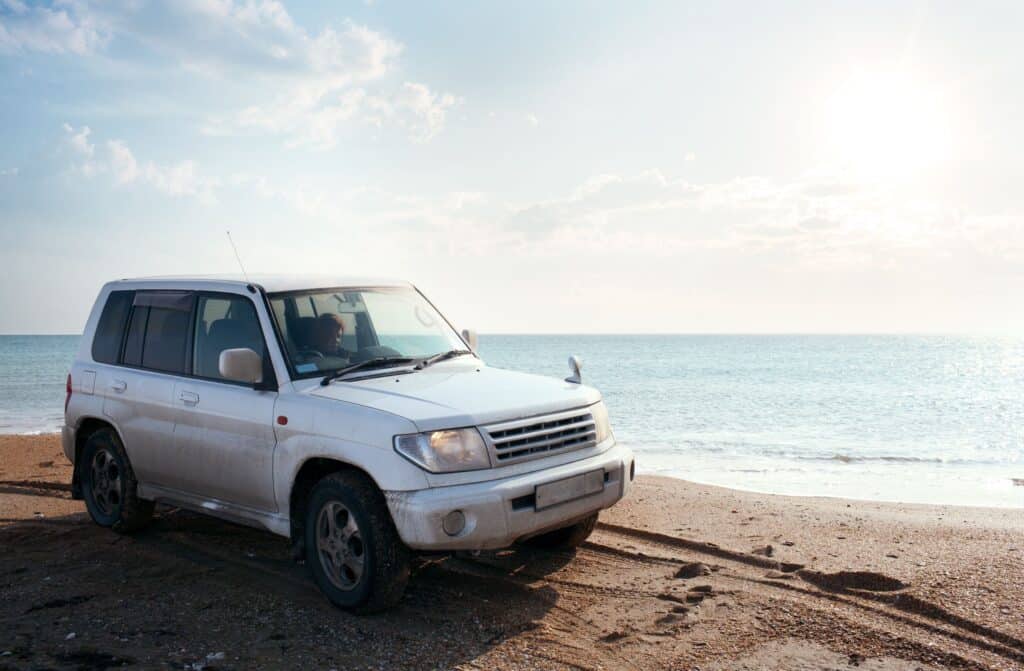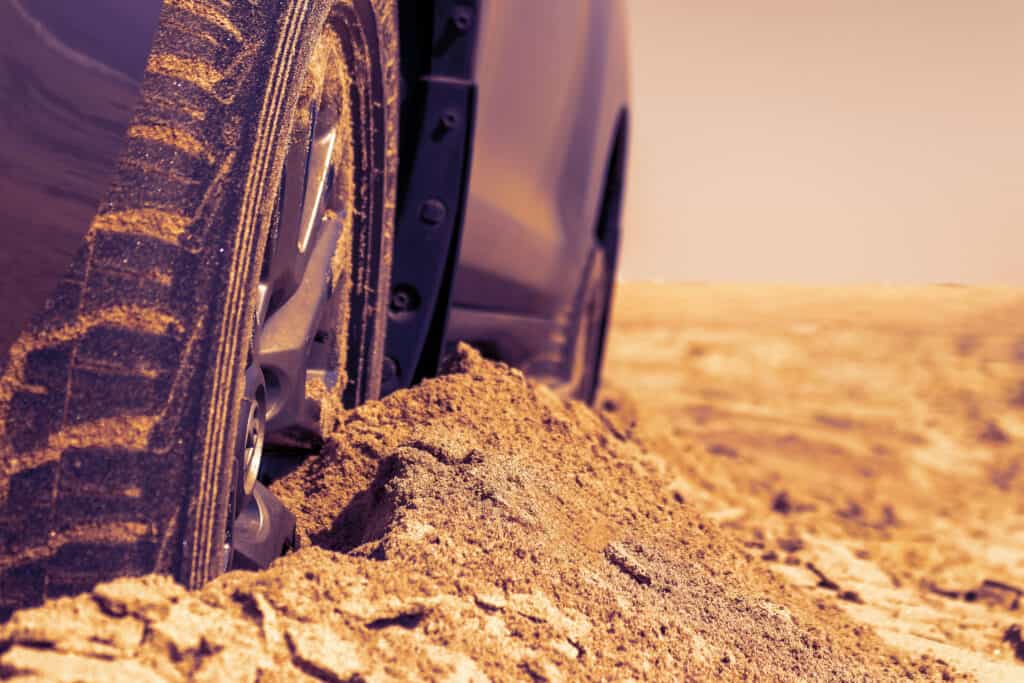Can AWD Go On Sand?
Nothing is better than a relaxing drive on the beach or an exciting drive through the dunes. However, does your AWD vehicle have what it takes to get through the sand? Let’s find out.
All-wheel-drive (AWD) vehicles can drive on sand. Many people confuse AWD with four-wheel-drive (4WD), but they do have a few differences. AWD might not be as powerful in design as 4WD, but for the most part, it should be able to get through most beaches, dunes, and even the snow.
Still not sure about your car? Read on for some helpful tips that will assist you in making the right decision as far as your car is concerned!
FWD, AWD, and 4WD: What’s the Difference?
First, let’s talk about the differences between FWD, AWD, and 4WD. FWD, or front-wheel drive, is designed to give all the power to the front wheels of the car. It is probably the most common drivetrain and can be found in various models. FWD is probably best known for its simplicity and maximization of cabin space. FWD vehicles typically produce fewer emissions and are very fuel-efficient. The only problem is, they are not usually best suited for off-roading and rough terrain because they are not powerful enough.
4WD (also known as four-wheel-drive or 4X4) is typically the most desirable drivetrain for off-roading. While it does employ the use of all the wheels, 4WD is significantly different from AWD. A lot of people get the two confused fairly often, so listen up. 4WD systems are designed to equally distribute power to all four wheels, which is why 4WD handles so well off-road. The main difference between 4WD and AWD is that 4WD is powerfully designed for all terrains, while AWD is specifically designed for better traction on wet roads.
AWD all-wheel-drive (which is commonly confused with 4WD) is designed to distribute torque evenly between the front axle and rear axle. This makes it easier for the car to avoid slipping and losing traction. In comparison to the other two, AWD is a fairly recent invention. AWD is most typically designed to give better traction on wet roads. You will find that most modern car models are equipped with either full-time or part-time AWD. Modern AWD systems tend to employ sensors to better monitor wheel speed and the car’s traction.
AWD In the Sand: Beaches, Dunes, and More

As mentioned above, AWD does not have near the same handling capabilities that 4WD does, but it should do pretty well on most beaches and even dunes. One of the most important things you ought to take into consideration is your vehicle’s ground clearance. The closer to the ground the car is, the more sand will scrape the bottom and kill your momentum. A low clearance will make it a lot more difficult for your AWD vehicle to get through the sand.
As far as sand itself is concerned, you have soft/loose sand, hard/compact sand, and fluffy sand to contend with. Soft and loose sand is drivable, of course, but it is definitely more difficult and more hazardous than compact sand. If you are going to the beach, you may want to do a little recon first. Are other people getting stuck? Is the sand squishy beneath your feet? Take a few minutes to “study” the sand a bit. If you drive and see other drivers getting bogged down, you should definitely avoid that area.
There are plenty of beaches with compact sand too. Any of those is definitely a safe choice, however, you should avoid getting close to the shoreline. The water will soften the sand and make it ten times easier for your vehicle to get stuck. The same thing is true if you are headed to the dunes. Dunes tend to be a lot softer and looser than beaches, so you should definitely take the time to get a feel for the land.
Take some time to walk the dunes! Check and make sure you aren’t alone because if you do end up needing help, it will be nice if there are other motorists around. If this is your first time on the sand, bring an experienced off-roader with you. They will be able to help guide you, teach you what to avoid, and so on. Again, AWD is perfectly capable of getting through plenty of sandy areas, but not all of them. Exercise good judgment when driving through the dunes.
Getting Unstuck: Safety Tips

Getting stuck—it happens to everybody at one point or another! If you have prepared adequately (good car, good tires, etc.), the chance of getting stuck will be much lower. Nothing is certain, of course, but you might as well be prepared. It is also a good idea to bring shovels along. There is every chance you will need to do a little digging to get your tires unstuck. If you are able, bring something to put between the tires and the sand (branches, traction mats, planks, etc.). This might make it easier for your car to get out.
The best thing you can do when you get stuck is to stay calm. Panicking and freaking out will not help you any, it’ll just make things worse. If you dig yourself into a rut, stop trying to move forward immediately. One key thing to remember is that the gas pedal is not your friend when you get stuck. It will merely cause your wheels to spin and dig the vehicle in deeper. If you are stuck, you should apply the parking brake and get out of the car, if possible. Assess your situation as best you can and enlist the help of your friends, if necessary.
Once you have dug the tires out as best you can, put something (branches, planks, or whatever else) under the tires. This will act as a barrier between the sand and your tires and hopefully help you to gain your traction back. If you can afford them, traction mats are probably your best bet. Above all, remember to be patient. Your car may not become unstuck right away and it might take a few attempts. Take a few deep breaths, and keep at it the best you can!
